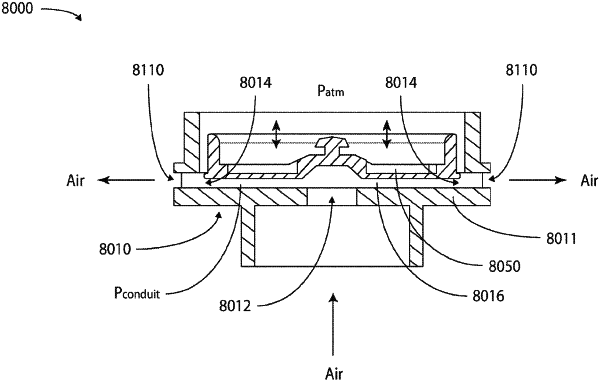| CPC A61M 16/20 (2013.01) [A61M 16/0066 (2013.01); A61M 16/0093 (2014.02); A61M 16/06 (2013.01); A61M 16/0683 (2013.01); A61M 16/0003 (2014.02); A61M 16/208 (2013.01)] | 24 Claims |

|
1. A valve configured to regulate a flow of gas washout from a patient interface, the valve comprising:
an inlet configured to receive the gas washout from the patient interface;
an outlet configured to expel the gas washout to atmosphere;
a valve body attachable to the patient interface;
a movable portion comprising a first side and a second side; and
a variable conduit configured to convey the gas washout from the inlet to the outlet, the variable conduit being defined at least in part by the valve body and the first side of the movable portion,
wherein the second side of the movable portion is isolated from the flow of gas, and the movable portion is configured so that movement of the movable portion changes an impedance of the variable conduit and is caused by a difference between air pressure on the first side of the movable portion and air pressure on the second side of the movable portion, and
wherein the variable conduit is configured so that a flow rate of the gas washout flowing through the variable conduit increases when a pressure of the gas washout entering through the inlet is relatively low and so that the flow rate of the gas washout is substantially constant when the pressure of the gas washout entering through the inlet is relatively high.
|